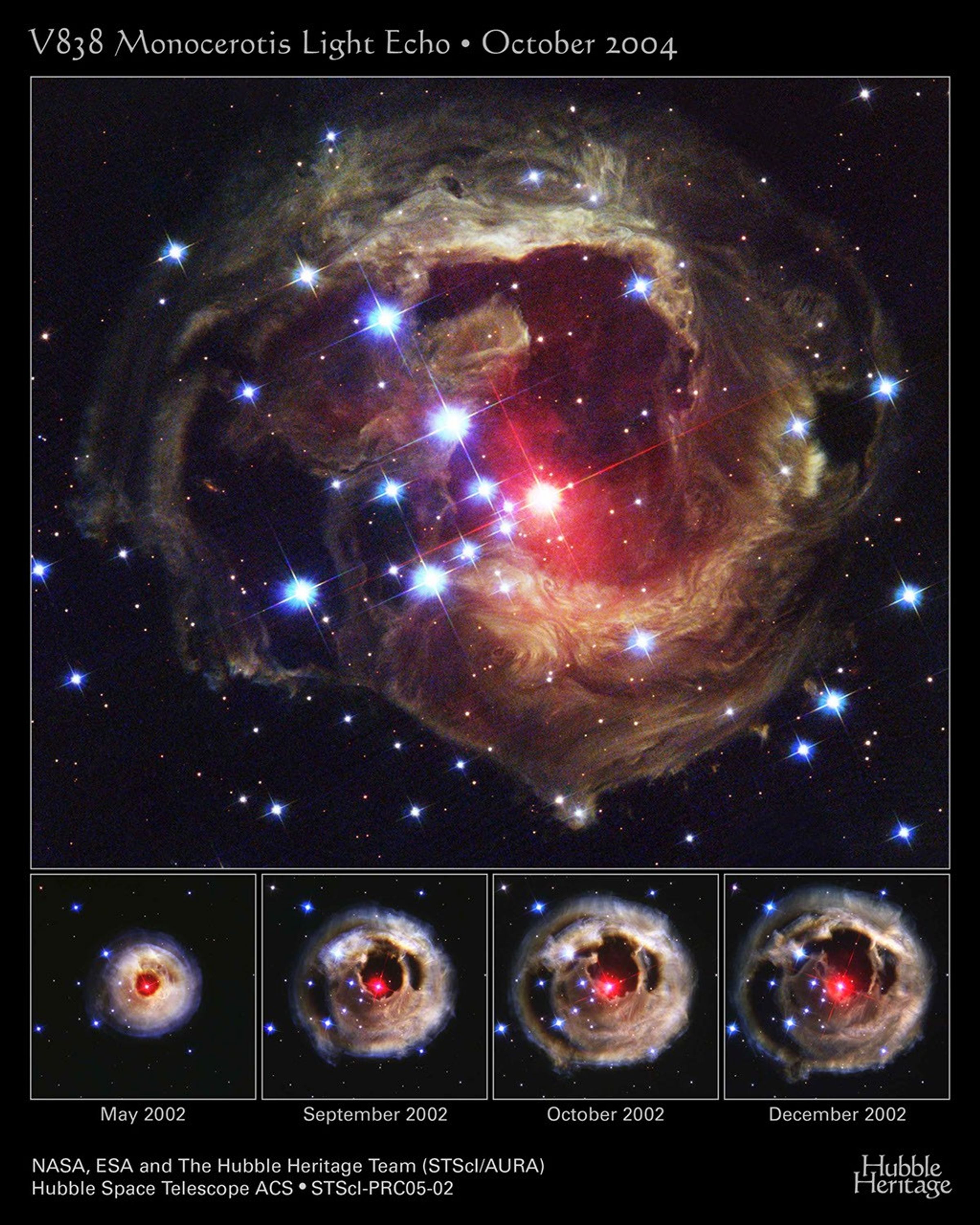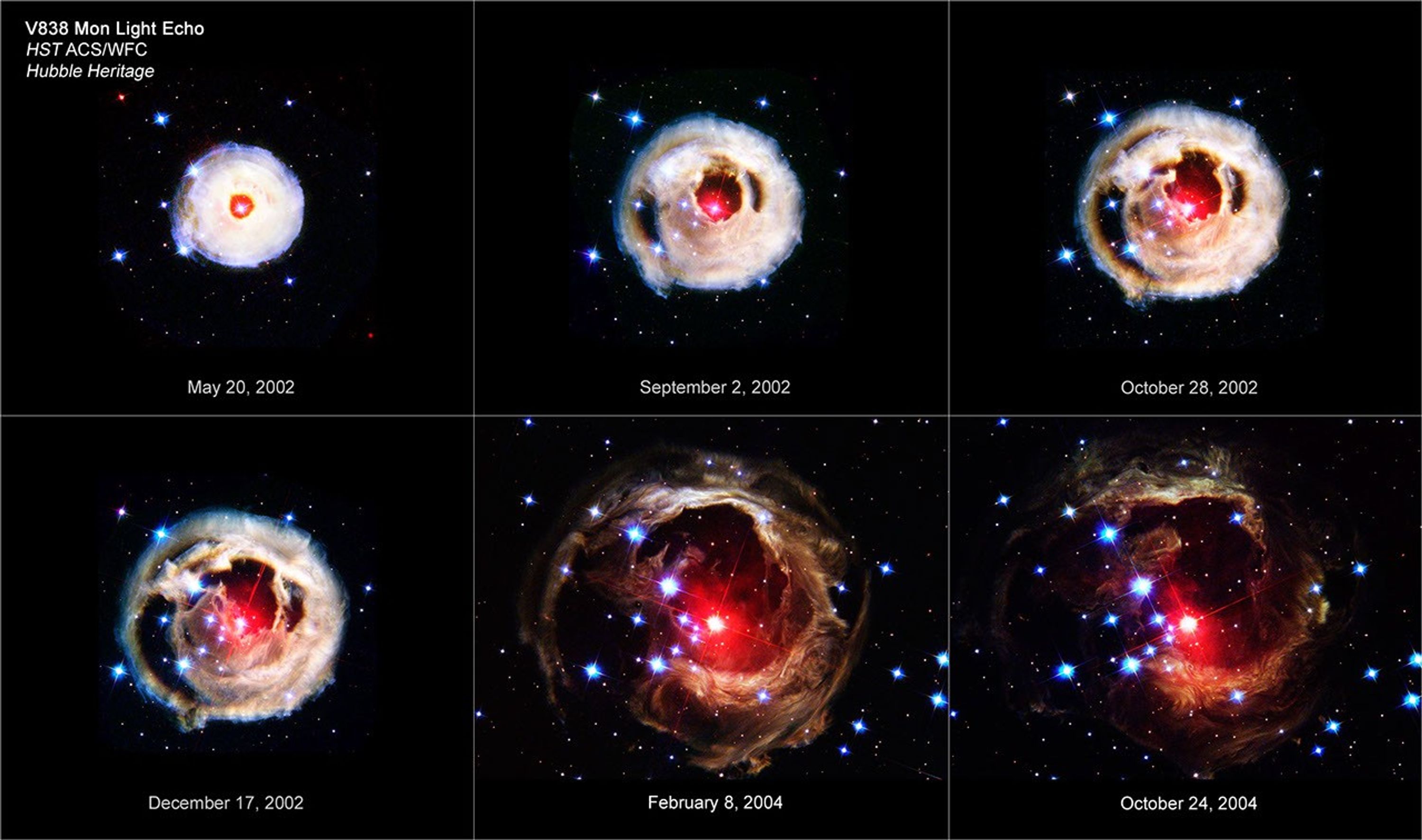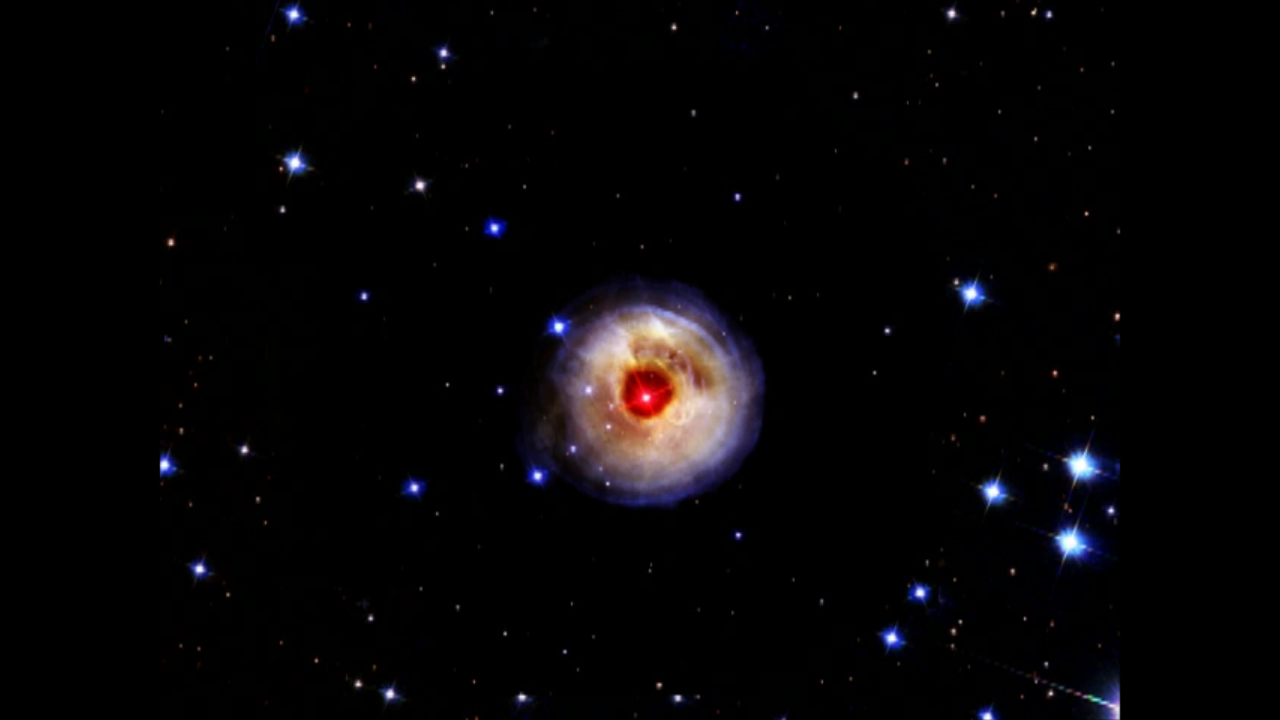1 min read
Light Echoes From Red Supergiant Star V838 Monocerotis – September 2002

About the Object
- R.A. PositionR.A. PositionRight ascension – analogous to longitude – is one component of an object's position.07h 4m 4.99s
- Dec. PositionDec. PositionDeclination – analogous to latitude – is one component of an object's position.-3° 50' 50.0"
- ConstellationConstellationOne of 88 recognized regions of the celestial sphere in which the object appears.Monoceros
- DistanceDistanceThe physical distance from Earth to the astronomical object. Distances within our solar system are usually measured in Astronomical Units (AU). Distances between stars are usually measured in light-years. Interstellar distances can also be measured in parsecs.The star is ~20,000 light-years (~6 kiloparsecs) away.
- DimensionsDimensionsThe physical size of the object or the apparent angle it subtends on the sky.The top image is 82 arcseconds (7.8 light-years or 2.4 parsecs) wide.
About the Data
- Data DescriptionData DescriptionProposal: A description of the observations, their scientific justification, and the links to the data available in the science archive.
Science Team: The astronomers who planned the observations and analyzed the data. "PI" refers to the Principal Investigator.These data are from the HST program 10392: K. Noll, H. Bond, C. Christian, L. Frattare, F. Hamilton, Z. Levay, M. Mutchler, and T. Royle (STScI). - InstrumentInstrumentThe science instrument used to produce the data.HST>ACS/WFC
- Exposure DatesExposure DatesThe date(s) that the telescope made its observations and the total exposure time.September 2, 2002
- FiltersFiltersThe camera filters that were used in the science observations.F435W (B), F606W (V), F814W (I)
- Object NameObject NameA name or catalog number that astronomers use to identify an astronomical object.V838 Monocerotis
- Object DescriptionObject DescriptionThe type of astronomical object.Nova-like variable star and surrounding light echo
- Release DateFebruary 3, 2005
- Science ReleaseLight Continues to Echo Three Years After Stellar Outburst
- Credit

Blue: F435W (B) Green: F606W (V) Red: F814W (I)
Related Images & Videos

Flash From Star V838 Monocerotis Echoes Through Space
The Hubble Space Telescope's latest image of the star V838 Monocerotis (V838 Mon) reveals dramatic changes in the illumination of surrounding dusty cloud structures. The effect, called a light echo, has been unveiling never-before-seen dust patterns ever since the star suddenly...

The Expanding Light Echo of Red Supergiant Star V838 Monocerotis
This image shows a time sequence of Hubble Space Telescope images of the light echo around V838 Mon, taken between May 2002 and October 2004. All six pictures were taken with Hubble's Advanced Camera for Surveys using filters sensitive to blue, visible, and infrared wavelengths....

V838 Mon Light Echo Unveiling
A dissolve sequence of six images taken by Hubble's Advanced Camera for Surveys shows a CAT-scan-like probe of the three-dimensional structure of the shells of dust surrounding the aging star V838 Monocerotis. The sequence reveals dramatic changes in the way a brilliant flash of...
Share
Details
Claire Andreoli
NASA’s Goddard Space Flight Center
Greenbelt, Maryland
claire.andreoli@nasa.gov































